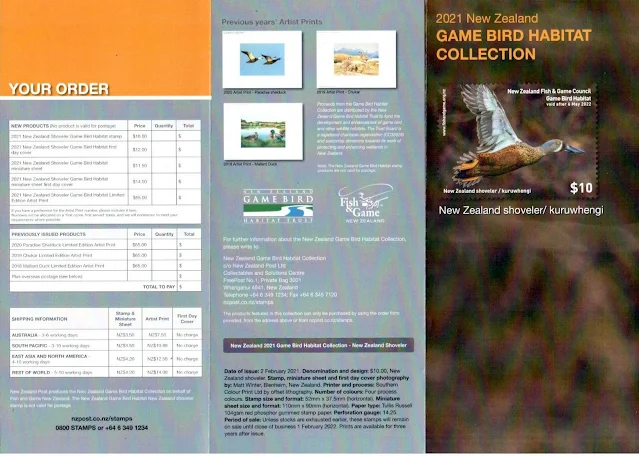 The New Zealand Game Bird Habitat Trust, established under the 1953 Wildlife Act, exists primarily to improve New Zealand game bird habitat, and secondarily to improve the habitat for other wildlife. The key purpose of the Game Bird Habitat Trust Board is to distribute funding for the development and enhancement of wetland habitat for the benefit of game birds and other wetland inhabitants.
The New Zealand Game Bird Habitat Trust, established under the 1953 Wildlife Act, exists primarily to improve New Zealand game bird habitat, and secondarily to improve the habitat for other wildlife. The key purpose of the Game Bird Habitat Trust Board is to distribute funding for the development and enhancement of wetland habitat for the benefit of game birds and other wetland inhabitants.The New Zealand Fish and Game Council commenced issuing $10 license stamps in 1994. The stamp is affixed to the game bird hunter's license thus validating the license for the current year. $2 of the license fee goes towards establishment and protection of Game Bird Habitats. The stamps and related products such as miniature sheets and First Day Covers are also marketed by NZ Post with funding received going back to the Habitat Trust.
This page will cover the stamps and all collector items for the year 1994 through 1999. In many cases, items may be missing but will be added when we find them. Consider this to be an on-going project that will be added to and improved as time goes on.
Game Bird Habitat Page One - 1994 - 1999.
Game Bird Habitat Page Two - 2000 - 2009.
Game Bird Habitat Page Three - 2010 - 2019.
Game Bird Habitat Page Four - 2020 - 2029.
2020 Game Bird.
2020 Paradise Shelduck.
Despite being hunted as a game bird, the paradise shelduck population has dramatically increased in recent decades. It is currently New Zealand’s most widely distributed waterfowl, and the second most common after the mallard. They have become so populous that farmers occasionally conduct legal culls.
Larger than the average duck, this species could be mistaken for a small goose. The female of the species is the more striking bird, with chestnut colouring and a white head and neck, while her mate’s head is black and his body dark with tawny tints.
The paradise shelduck has benefited from the human modification of natural landscapes, another characteristic that makes this bird stand out from other native duck species. They are herbivorous, with a preference for pasture grasses and clover, but are known to eat a broad range of leaves and seeds, insects, and some aquatic plants and invertebrates.
2020 Paradise Shelduck - First Day Cover.
2nd February 2020.
2nd February 2020.
2020 Paradise Shelduck - Miniature Sheet.
2020 Paradise Shelduck - Minature Sheet First Day Cover.
2nd February 2020.
2021 Game Bird.
2021 - Shoveler / kuruwhengi.
Also known as the ‘spoonie’, the New Zealand Shoveler is a specialist filter-feeding waterfowl. The comb-like openings in the side of its spoon-shaped bill let it sift fine insect life from the surfaces of wetland ponds. The bill is almost twice as broad at its tip than at its base and is the bird’s most conspicuous feature.
These birds are widespread throughout the North and South Islands. Shovelers mainly occur in large freshwater wetlands but may also be encountered in sheltered estuaries and brackish lakes.









We appreciate your engagement with our content. To ensure a respectful and constructive community, please take note of the following:
- No Spam, Please: We do not tolerate spammy or promotional comments. Any such comments will be promptly removed.
- Moderation in Place: All comments are moderated to maintain a positive and inclusive environment. Please be patient, as it may take a little time for your comment to appear.
- Sign In with Google: To comment, please sign in using your Google account. This helps us maintain the integrity of our community and allows for better interaction.